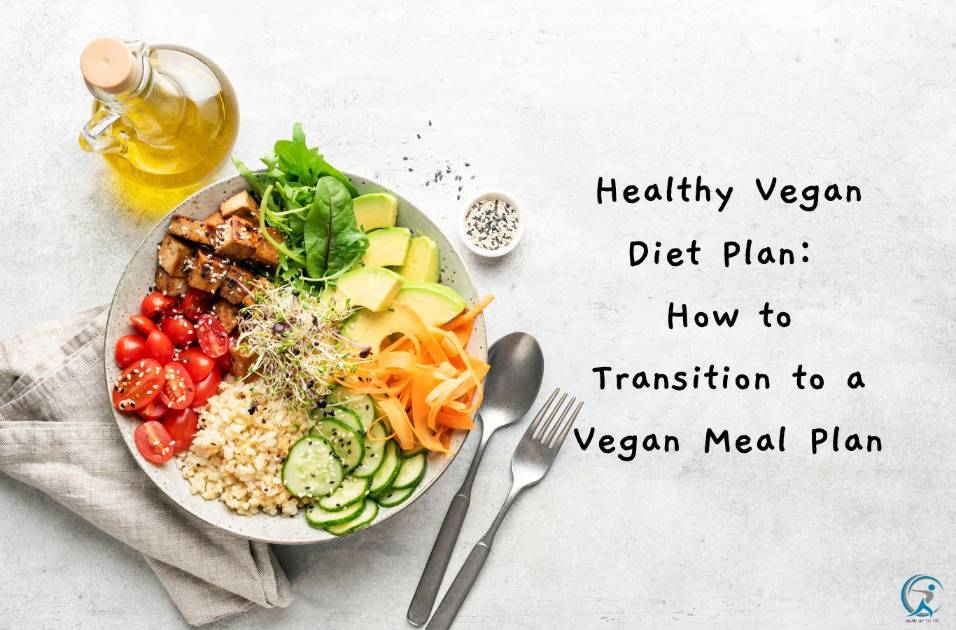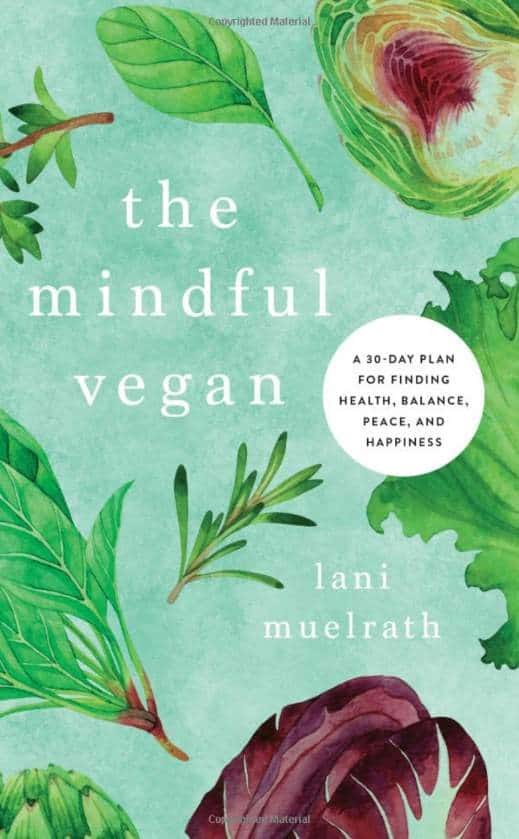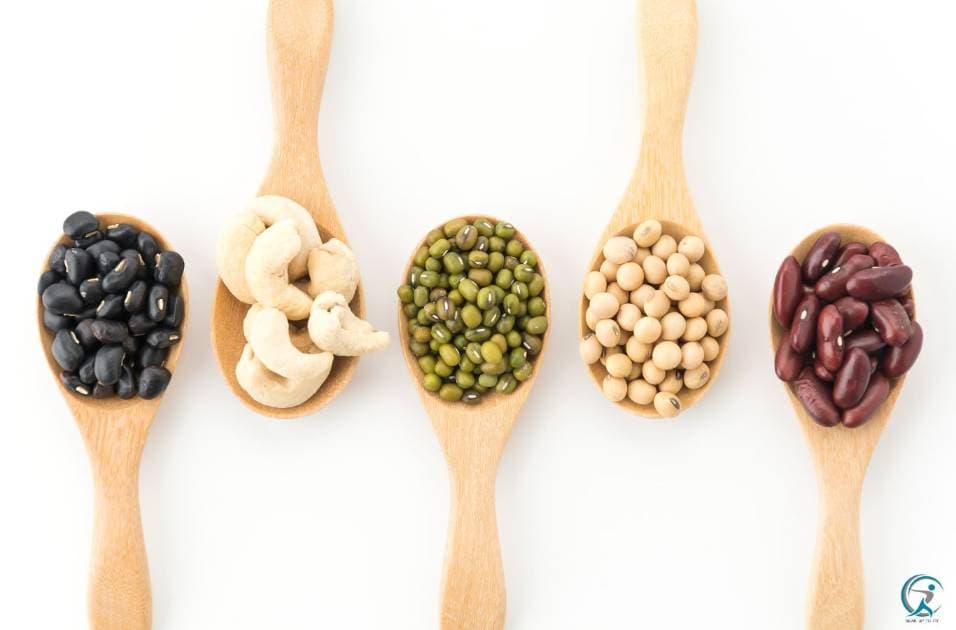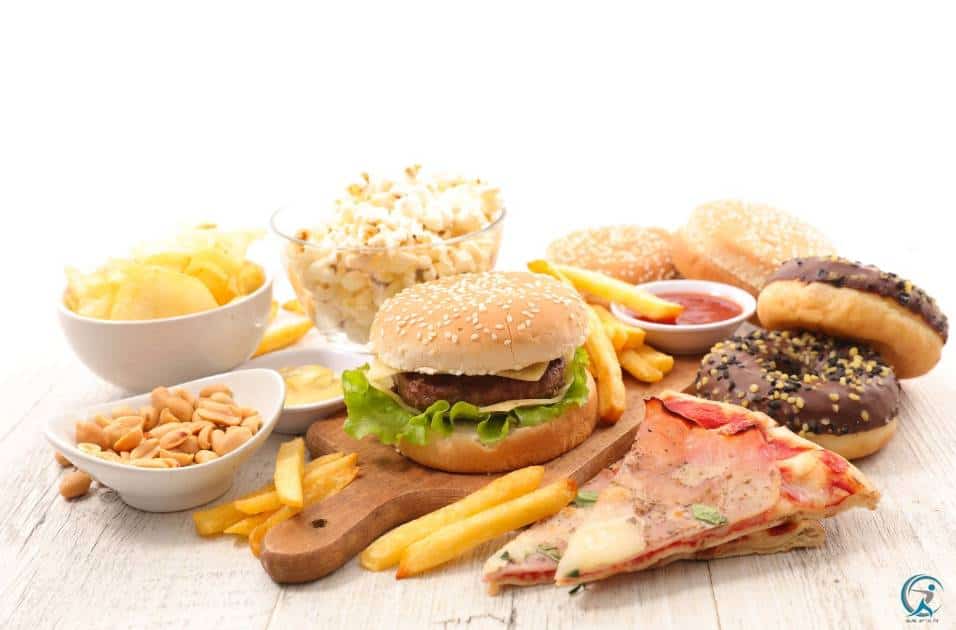A vegan meal plan is based on the idea of not eating any animal-sourced products. This includes not eating meat, fish, poultry, and all other animal products.

Going vegan is one of the healthiest diet changes you can make. If you’re thinking about switching to a vegan meal plan, I know it can initially seem overwhelming. But I promise it’s not as hard as it seems. And before we jump in, if you’re looking for more information about going vegan, check out our free guide on How to Go Vegan The Right Way!
First, I want to let you know that all my clients who have transitioned from an omnivore diet to a vegan one and achieved some amazing results didn’t do it overnight. They took their time making this change and did so successfully.
So don’t be discouraged if, after a week or two, you are still craving meat – because cravings will happen!
Eat a Little Bit of What You Love
If you’ve never been vegan before, then it’s likely that there are some foods that you love. Don’t deprive yourself of those foods entirely. If anything, try to incorporate more of them into your diet to make the transition easier!
However, don’t overeat any one food—whether it’s something healthy or not-so-healthy. It’s easy to get carried away when you’re eating something new and exciting, but if you do this regularly leads to an unhealthy diet overall.
Also, remember: variety is key! Don’t get stuck in a rut eating the same thing repeatedly just because it tastes good and makes you feel satisfied (or worse yet—because it’s all there is). Instead, try new recipes often so that each mealtime feels like an adventure!
Plan Your Meals

Planning your meals before shopping is one of the most effective ways to stay on track with a vegan diet. With a plan in place, you’ll be less likely to succumb to temptation and make poor food choices when in a rush or hungry. Planning also saves money because it prevents wasting food that spoils before being used.
By planning, you can cook larger batches of vegan dishes at once rather than cooking small portions daily, which will save time and energy (and dishes).
If you’re going out to eat with friends or family members who aren’t following a plant-based diet plan, don’t worry! There are plenty of ways for vegans and non-vegans alike to enjoy delicious meals together:
Make It a Game
Once you know what you can and can’t eat, it’s time to make a game plan. Remember that your goal is to transition from eating a Standard American Diet (SAD) to one that is whole plant-based. One way to do this is by using the “seven-day vegan challenge.” The seven-day vegan challenge allows you time to become accustomed to new foods, learn how much food you need, and transition into living your life as a healthy vegan.
Here’s how it works:
- Set aside seven days where no animal products will be consumed (including fish). No dairy or eggs either!
- These days only eat food from the following: fruits; vegetables; grains such as rice, quinoa, or oats; legumes such as black beans and soybeans; nuts like walnuts or cashews in moderation due to their high-fat content. These are considered whole plant foods because they haven’t been processed/refined by humans, so their nutritional value remains intact!
As you eat a whole-food vegan meal—a bean burrito and salad; a bowl of rice and veggie stir-fry; or oatmeal, fruit, and toast with almond butter—it starts making its way through your system.
from The Mindful Vegan: A 30-Day Plan for Finding Health, Balance, Peace, and …
by Lani Muelrath, Neal Barnard
The Mindful Vegan

A 30-Day Plan for Finding Health, Balance, Peace, and Happiness
- Mediation and mindfulness
- Discover how to shed old thinking patterns-
- Live more joyfully with food.
- Are you ready to get to the roots of your challenges around food
- This means no refined sugars either! Eating only these types of whole plants means that there won’t be any added oils or fats besides those naturally occurring within them (e.g., olive oil). We want our bodies to get nutrients from real food sources instead of processed ones like french fries, which have little nutritional value left after being fried twice (once when they’re made, then again after they’ve cooled down). Instead, opt for things like baked sweet potato fries!”
Healthy Vegan Food Meal Ideas
Veganism is a dietary practice that excludes all animal products, including meat, poultry, fish, eggs, and dairy products. To be clear, most vegans don’t eat any animal products at all. And many vegans go even further to avoid honey and other animal by-products.
You might think that being vegan means eating salads and beans all day long, but there are plenty of tasty options in the plant kingdom. Try these healthy vegan meals for ideas on how to make your diet more plant-based.
A good breakfast can set you up for success with two or three meals in a row, so if you want to follow a vegan diet long-term, choose wisely!
Planning a vegan diet can be a challenge. But it doesn’t have to be a struggle. The key to successfully going vegan is to eat plenty of fruits and vegetables, whole grains, legumes, nuts, and seeds.
Sample of Healthy Vegan Meal Plan
Breakfast:
Oatmeal cooked with cinnamon and raisins (or fresh fruit)
Whole-grain cereal with fresh fruit
Whole-grain toast with peanut butter or almond butter and sliced banana or berries
Lunch:
Fresh vegetable salad with chickpeas, beans, or tofu; dressing of choice (mayonnaise-based dressings are not recommended because they contain eggs)
Baked potato topped with baked beans or lentils, brown rice, steamed broccoli, and ketchup (mayonnaise-based dressings are not recommended because they contain eggs)
Dinner:
Black bean burger on a whole wheat bun (use gluten-free flour if needed) topped with lettuce, tomato slices, onion rings, and ketchup (mayonnaise-based dressings are not recommended because they contain eggs)
Be Creative With Your Vegan Meal Plan
Use vegetables in place of meat.

This is probably the easiest way to transition to a vegan diet, as you can use so many kinds of vegetables, and they’re readily available. Try using broccoli, cauliflower, cabbage, carrots, or onions as an alternative to chicken breast or beef patties. The sky’s the limit!
Use beans in place of meat.

If you want something more filling but still want that savory taste, then try beans! They’re also great for your body since they’re full of proteins and fiber, which help keep energy levels up throughout the day! You can use:
- black beans on tacos or chili,
- white beans on salads like tuna salad;
- kidney beans for chili con carne;
- red lentils with brown rice (especially good with Indian cuisine);
- chickpeas (garbanzo) all over Mediterranean-style dishes like hummus sandwiches or tabbouleh salad—the list goes on!
Tofu as an alternative source.

This one might take some time to get used to since if wasn’t initially developed until around 600 BCE. Still, once people got used to it being made out of soybeans instead of milk then, everyone started loving it again because now there was an alternative source that didn’t need any animal products involved whatsoever…if only those cavemen had known earlier huh?
Anyway, back then, they would have called them “soy cakes” instead though today, we refer mostly call them tofu because we know how healthy they are without needing any other kind ingredients added into them except maybe seasoning spices from time to time, depending on what flavor profile we desire most often between spicy hot curry sauce versus sweet orange juice chocolate syrup drizzled over top ice cream sundae toppings; anyway enough about food already let’s get back onto a topic here before I ramble off too much longer than necessary again.
Take the Junk Out of Your Kitchen
Take the junk out of your kitchen. Remove all the sugary, salty, processed foods from your house as soon as possible. Get rid of the candy, chips, and cookies—even if you think they’re only there for guests to eat. If you have a kid in the house who is still eating animal products (don’t worry; we will cover this later), ask them to help make this transition easier by giving up junk food!
Get rid of the junk food that you keep in your car and at work. Even if it isn’t something you regularly consume on its own (like an ice cream sandwich), if it’s sitting around tempting you day after day, it needs to go!
Have Healthy Snack Options Around

Snacks are a great way to maintain energy levels and keep your blood sugar even, but they’re not all created equal. If you’re going to eat snacks, make sure they’re healthy ones! Healthy snacks include fruits, vegetables, nuts, seeds, and whole grains. You can also choose to make your snacks using these ingredients or buy pre-made options like granola bars or trail mix. Having healthy snack items available throughout the day will help ensure that you never have an excuse for falling off the wagon when it comes to eating healthily by choice rather than out of necessity (such as being too hungry).
Making the transition to a vegan meal plan is doable if you take it slow, plan your meals and be creative with your food.
When you’re ready to start your vegan journey, there are a few ways you can prepare for it.
One way is by taking it slow and planning your meals so that you don’t run out of food or get too hungry and binge on something unhealthy. Another option is to do the best you can with what’s available at the moment and try not to worry too much about getting everything perfect right away. After all, there will be plenty of time later in your journey when things become more routine!
Another great tip is to take the junk out of your kitchen before starting this new diet plan so that there won’t be any temptations around (you know what they say: “out of sight; out of mind”). This also applies when cooking for others who aren’t following along with us here at [your blog]. Finally, it’s essential not just for ourselves but also for our friends/family members who may want some guidance through this transition process but haven’t yet made any changes themselves either because maybe they’re skeptical about eating plant-based foods or maybe they don’t know where exactly where those types exist locally near them yet because most grocery stores still only carry animal-based items instead…or both!
Conclusion
By following our tips, you’ll be well on your way to finding a vegan meal plan that suits you. We want to leave you with this last thought: don’t feel bad if it takes time. Transitioning to a new diet is not easy, and it should be taken one step at a time. Try out some of these tips, and let us know how they work for you!
FAQ about Healthy Vegan Diet Plan
The best way to transition to an all-vegan diet is by starting with one meal per week. This will help you figure out what foods are most appealing to you and which ones you don’t like. You can then slowly add more meals each week until you’re eating only plant-based food.
If you want to start a vegan diet for health reasons, it is important to understand what this means. A vegan diet can be defined as one where no animal products are consumed. This includes meat, fish, dairy, eggs, honey, etc.
Vegan diet takes about three weeks to become normal. You can eat anything you want, but you will feel hungry all the time.
If you go vegan for a whole month, you will lose weight, feel better, and save money.
Transitioning from a plant-based to a vegan diet can be done slowly over a period of weeks. You should start with small changes such as replacing meat with beans, then add more vegetables and fruits, and finally add dairy and eggs.
If you are eating a lot of fruits and vegetables, it can be difficult to lose weight. You should also try to eat more whole grains and less processed foods like white bread and pasta.
Vegan Meal Plan




As a veteran fitness technology innovator and the founder of GearUpToFit.com, Alex Papaioannou stands at the intersection of health science and artificial intelligence. With over a decade of specialized experience in digital wellness solutions, he’s transforming how people approach their fitness journey through data-driven methodologies.

